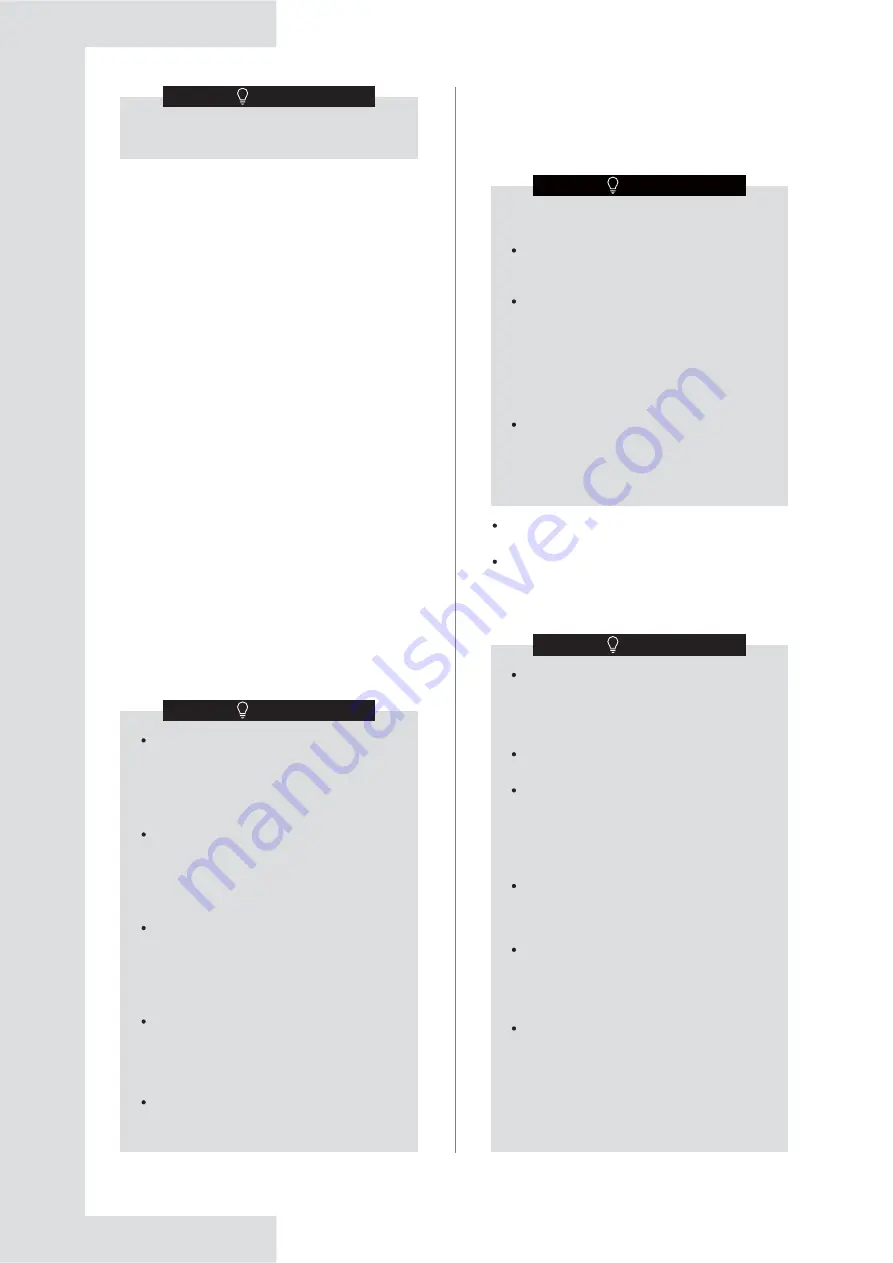
4.2.3 Safety measures to prevent
refrigerant leak
4.3.1 Refrigerant piping requirements
4.3.2 Design considerations
Foreign objects in the pipes (including lubricant used
Calculate all piping lengths and distances.
Do not obstruct the air flow of the unit when you
install the snow shield.
NOTE
Safety measures to prevent refrigerant leak
The installation personnel must make sure the safety
measures to prevent leaks comply with local
regulations or standards. If the local regulations do not
apply, the following criteria can be applied.
The system uses R410A as the refrigerant. R410A
itself is a completely non-toxic, and non-combustible
refrigerant. However, do ensure that the air
conditioning unit is installed in a room with sufficient
space. This is so that when there is a serious leak in
the system, the maximum concentration of the
refrigerant gas in the room will not exceed the
stipulated concentration, and is consistent with the
relevant local regulations and standards.
About the maximum concentration level
The calculation for the maximum concentration of the
refrigerant is directly related to the occupied space that
the refrigerant may leak to and the charging amount of
the refrigerant.
! # $ # %
3
(weight of gaseous refrigerant that has a volume of 1
m
3
in the occupied space).
The highest level of permissible concentration must
comply with the relevant local regulations and
standards.
Based on the applicable European standards, the
maximum permissible concentration level of R410A in
#&#*++%
3
.
4.3 Select and Prepare the
Refrigerant Piping
The R410A refrigerant pipeline system must be
kept strictly clean, dry and sealed.
NOTE
Cleaning and drying: prevent foreign objects
(including mineral oil or water) from mixing
into the system.
Seal: R410A does not contain fluorine, does
not destroy the ozone layer, and does not
deplete the ozone layer that protect the earth
from harmful ultraviolet radiation. But if it is
released, R410A can also cause a slight
greenhouse effect. Therefore, you must pay
special attention when you check the sealing
quality of the installation.
The piping and other pressure vessels must
comply with the applicable laws and suitable
for use with the refrigerant. Use only
phosphoric acid deoxidized seamless copper
for the refrigerant piping.
If 12 ports or less are required, only one
mode selection (MS) box is required. If 13
ports or more are required, multiple MS
boxes are required. Choose appropriate MS
box on the basis of actual conditions.
The amount of brazing required should be
kept to a minimum.
As bends cause pressure loss on
transportation of refrigerant, the fewer bends
in the system, the better it is. Piping length
needs to take the equivalent length of bends
into account (the equivalent length of each
branch joint is 0.5 m).
On the two inside sides of the first branch
joint, the system should, as far as possible,
be equal in terms of number of units, total
capacities and total piping lengths.
Indoor units connected to the MS box sharing
one port cannot operate in heating and
cooling modes simultaneously. (i.e. they must
function in either heating or cooling in
tandem
.
)
Indoor units with a capacity more than 16 kW
should be connected to 2 ports merged in a
multi MS box using branch joints. Merged
ports must start on an odd number and with
the next sequential even number (i.e. 1, 2 or
3, 4 and so on). And if a single MS box is
used, the downstream indoor units can be up
to a maximum capacity of 32 kW.
NOTE
4.2.4 Frequency of Refrigerant Leak
Checks
For equipment that contains fluorinated
greenhouse gases in quantities of 5 tonnes of
CO
2
equivalent or more,but of less than 50
tonnes of CO
2
equipment,at least every 12
months ,or where a leakage detection system
is installed, at least every 24 months.
For equipment that contains fluorinated
greenhouse gases in quantities of 50 tonnes
of CO
2
equivalent or more,but of less than
500 tonnes of CO
2
equipment,at least every
six months , or where a leakage detection
system is installed, at least every 12 months.
For equipment that contains fluorinated
greenhouse gases in quantities of 500
tonnes of CO
2
equivalent or more,at least
every three months ,or where a leakage
detection system is installed, at least every
six months.
Non-hermetically sealed equipment charged
with fluorinated greenhouse gases shall only
be sold to the end user where evidence is
provide that the installation is to be carried
out by an undertaking certified person.
Only certificated person is allowed to do
installation, operation and maintenance.
NOTE
7













































